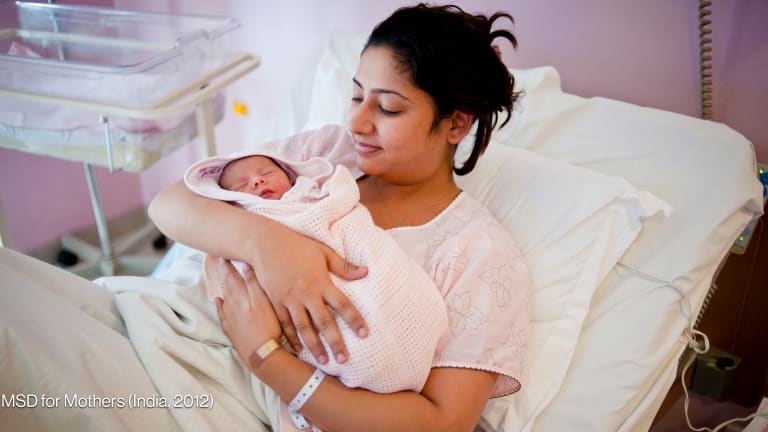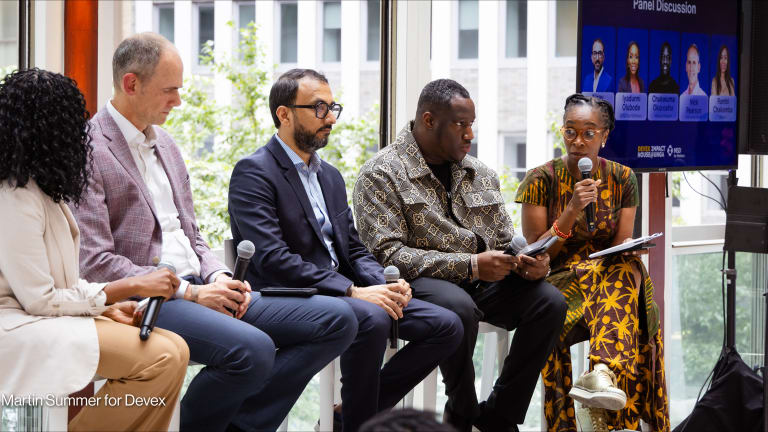
In August 2010, Ning, my best friend, was in bed in a special section of Huashan Hospital in Shanghai. This section only serves people who can afford to pay high out-of-pocket costs. In exchange, patients have luxury amenities and increased attention.
Tingting, Ning’s baby girl, was sleeping peacefully next to her mother, who looked tired. She was still recovering from her cesarean section from the prior week. The reasons for her C-section were difficult to pin down, though. They included everything from a fear of something going wrong to a conflict in her OB-GYN's schedule. What we do know is that the decision was anything but medically indicated.
In July 2016, I met Rarash at a health post — the lowest level of health facility in the Amhara region of northern Ethiopia. Already a mother, she was pregnant again and had traveled two hours by bicycle for her routine checkup.
Later, I learned that this was actually Rarash’s third pregnancy. Four years prior, she had lost her second child 11 days after giving birth alone on the floor in her house. Rarash didn’t have any prenatal or postnatal care, and newborn death is a taboo subject in Ethiopia’s traditional communities.
Ning’s and Rarash’s stories are not unique. They represent two worlds.
Opinion: Why and how to take action for front-line health workers
The Frontline Health Workers Coalition, VillageReach, and the Community Health Impact Coalition explain why governments and individuals must change the systems that fell short before and during the COVID-19 pandemic.
In one world, childbirth is overly medicalized. A C-section can be lifesaving in obstetric emergencies, but a rise in C-sections for nonemergencies has become a global concern. According to a study in The Lancet, C-section births almost doubled between 2000 and 2015. In Brazil, the C-section rate is as high as 56%. When Ning gave birth to Tingting, China’s C-section rate in supercities was over 50%.
Yet C-sections pose risks, including postpartum hemorrhage. There is also emerging evidence of an increased chance of allergy, atopy, and asthma, as well as reduced intestinal gut microbiome diversity, among babies delivered this way.
In 2015, the World Health Organization issued a statement saying that C-section rates higher than 10% were not associated with reductions in maternal and newborn mortality and that “rather than striving to achieve a specific rate, efforts should focus on providing caesarean section to all women in need.”
The second world is one in which access to essential health services is limited.
According to WHO, more than half of the world’s people do not receive the full range of essential services they need. Despite progress in reducing maternal mortality, 810 women die every day due to complications in pregnancy and childbirth, while 7,000 babies who are less than a month old die each day. The majority of these deaths could be prevented through access to quality health care.
The main factors that prevent women from receiving or seeking care during pregnancy and childbirth are the “three delays”: a delay in deciding to seek care, which is associated with social, economic, and cultural factors; a delay in reaching appropriate health care facilities, which is connected to their accessibility; and a delay in receiving adequate and appropriate care at a facility, which speaks to the quality of care.
Anneka Knutsson, chief of the sexual and reproductive health branch in the technical division at the United Nations Population Fund, has summarized the “two worlds” problem as “the problem of too much too soon [and] too little too late.”
Professionalized midwives: A critical part of the solution
Professionalized midwives — those who are educated to international standards, licensed, regulated, fully integrated into health systems, and working in interprofessional teams — and the inclusion of family planning in midwifery could avert over 80% of all maternal deaths, stillbirths, and neonatal deaths, according to WHO.
Midwife-led continuity of care — in which a midwife or small group of midwives known to a woman supports her throughout the prenatal, intrapartum, and postnatal continuum — produces additional benefits in terms of outcomes, satisfaction, and potential cost savings. One systematic review showed that organizational reforms in maternity services promoting midwife-led continuity of care reduce C-section rates.
“Despite resource constraints, 28 low- and lower-middle-income countries reduced their MMR [maternal mortality rates] by more than 50% between 2000 and 2017,” according to “The State of the World’s Midwifery 2021” report. Data from 18 of these countries shows that “many have increased deployment of midwives or nurses at births, usually in facilities.”
In Malawi, “the percentage of births in a health facility increased by 83% and the percentage of midwife/nurse-assisted births increased by 36%,” the report said. As a result, “Malawi’s MMR fell by more than 50% between 2000 and 2017.”
This shows that a professionalized midwifery workforce plays an integral part in avoiding maternal mortality, as well as a multitude of other maternity-related issues.
Yet data shows there is a global shortage of 1.1 million health personnel in sexual, reproductive, maternal, newborn, and adolescent health — or SRMNAH — including 900,000 midwives.
There is a tendency to think midwives are needed just for maternal and newborn health care but “The State of the World’s Midwifery 2021” indicates that fully educated and regulated midwives, integrated within and supported by interdisciplinary teams and an enabling environment, “can deliver about 90% of essential SRMNAH interventions across the life course.” It is therefore important to educate, deploy, and regulate midwives so that they can perform this broader role.
The report calls for urgent investment in high-quality education and training; management, regulation, and the work environment; leadership and governance, and service delivery.
How to support midwives
At Johnson & Johnson, we know good health starts at homes and in communities. Midwives are often among the first — and sometimes the only — health workers for communities to get the care they need. That’s why, together with our partners, we have been supporting midwives and other front-line health workers, who are foundational to the health of our societies, since our earliest days.
In January 2020, we announced our renewed commitment to nurses, midwives, and community health workers through the launch of the Johnson & Johnson Center for Health Worker Innovation, which focuses on five key areas: training and education, leadership and management, resilience and well-being, connection and integration, and respect and recognition. Together with our partners, we hope to build and strengthen a thriving midwifery workforce that provides high-quality care everywhere.
The evidence is clear, and so is the need. I hope more will join us in supporting midwives. There are many ways to support midwives — from spreading the “fast facts” of “The State of the World’s Midwifery 2021” to partnering with national midwifery associations and women’s organizations in advocating for policy change to contributing to UNFPA’s campaign to raise funds for midwives throughout the month of June. It is ultimately about the health and safety of women and children in both of the two worlds.








